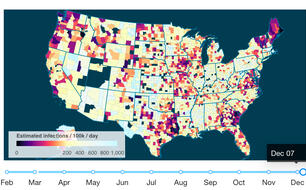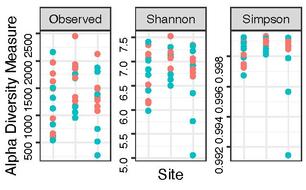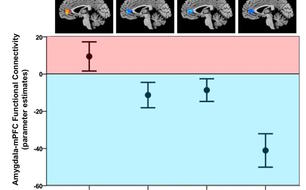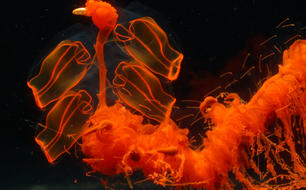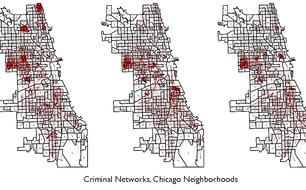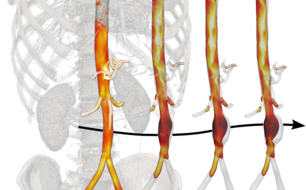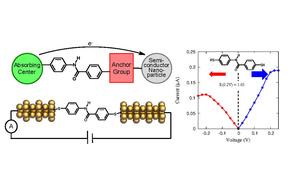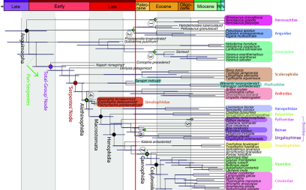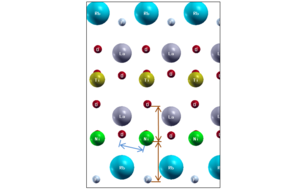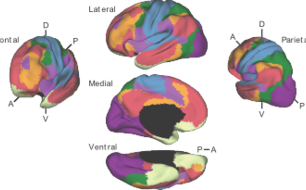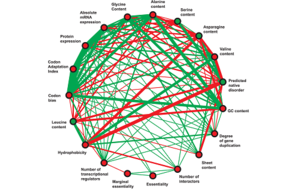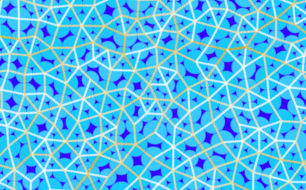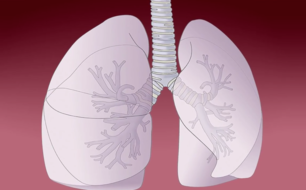Research
New COVID-19 Nowcasting Model Estimates Current Infection Rates
Several members of the Yale Public Health Modeling Unit have developed and implemented a statistical model which uses reported time-series of COVID-19 diagnoses and deaths to estimate the current number of individuals infected with COVID-19, the cumulative incidence of infection, and the effective reproduction number at the county- and state-levels in the United States.
MORE ABOUT THIS RESEARCH ITEMGenome-wide Association Study for Pancreatic Cancer in Jewish Subjects
Jews have been found to have a higher risk of pancreatic cancer compared to non-Jewish whites. Our research explored a genetic basis for this higher risk.
MORE ABOUT THIS RESEARCH ITEMUnderstanding the effect of changing resource availability on soil microbial communities
Christopher (Chris) Beltz is a Ph.D. candidate in Forestry & Environmental Studies at Yale. His research explores the interactions between the carbon and nitrogen cycles in the semi-arid environments of the western United States. Understanding the interplay between these two major nutrient cycles is critical to understanding the major drivers of ecosystem structure and ecosystem function in the drylands across the globe. Chris is particularly interested in structure-function relationships and how these may be altered under changing resource availability.
MORE ABOUT THIS RESEARCH ITEMDelineating Neurodevelopmental Mechanisms of Childhood Anxiety and Stress
Dylan Gee is an Assistant Professor of Psychology at Yale. Her program of research aims to translate findings from developmental neuroscience to optimize treatments for children and adolescents with anxiety and stress-related disorders. Understanding how key neural circuits mature in typical development and how these processes go awry in atypical development is critical to the identification and treatment of mental health disorders. Dr.
MORE ABOUT THIS RESEARCH ITEMUnderstanding the Diversity of Life
At the Dunn lab we develop methods and tools to study phylogenetics (evolutionary relationships), and apply these to the study of animal diversity. We are particularly interested in understanding the deepest relationships in the animal phylogeny, as well as learning about the evolution of siphonophores – a remarkable group of oceanic animals that includes the Portuguese man o’ war.
MORE ABOUT THIS RESEARCH ITEMUnderstanding the Spatial and Network Diffusion of Crime Across Urban Neighborhoods
Our research team investigates disparities in neighborhood violence in Chicago. In this line of research, we examine how the concentration of violence within urban areas is maintained and magnified by the diffusion of violence from one place to the next, with particular attention to city-level criminal networks in Chicago. These studies provide two main contributions to the literature on urban crime: first, we describe the way that social connections between individual criminal offenders form a city-wide network that spans neighborhoods throughout the city.
MORE ABOUT THIS RESEARCH ITEMAstronomy at Yale — the movie
“Astronomy at Yale,” a new, 23-minute film about the faculty, students, and researchers involved in Yale astronomy — as well as their discoveries. It’s a cinematic trip to galaxies far, far away.
“We have great stories to tell, and there is a real sense of excitement here,” said department chair Pieter van Dokkum. “Yale is leading in areas of research that didn’t even exist 15 years ago. We’re on the threshold of a new era in astronomy.”
MORE ABOUT THIS RESEARCH ITEMMultiscale Modeling of Arterial Adaptations
The Continuum Biomechanics Lab in the Department of Biomedical Engineering at Yale is committed to understanding better the mechanobiological mechanisms by which biomechanical forces regulate processes of adaptation and disease progression in arteries. The lab relies heavily on large scale computing to simulate realistic distributions of blood pressures and flows as well as wall stress fields within large segments of the vasculature.
MORE ABOUT THIS RESEARCH ITEMTowards Computational Psychiatry: Understanding Mental Illness via Neuroimaging, Pharmacology and Computation
The research division, named Neurocognition, Neurocomputation, and Neurogenetics (N3), focuses on systems neuroscience in psychiatry. Dr. Anticevic, co-Director of N3, and his team along with other researchers at N3 combine cognitive, computational and genetic approaches as well as pharmacological and neuroimaging genomic techniques to bridge levels of experimental analysis and link genes, circuits, and behavior.
MORE ABOUT THIS RESEARCH ITEMThe Origin and Application of Single-Molecule Rectification
Understanding how current passes through molecules in dye-sensitized solar cells (DSSCs) is important to find viable solutions to the renewable energy problem. The research group lead by Professor Victor S. Batista is focused on computational studies of single molecule rectifiers to advance fundamental understanding in the field. Working with collaborators at the Energy Science Institute and at Columbia University the team hopes to synthesize, characterize and assemble efficient rectifiers that could boost the overall performance of photoconversion.
MORE ABOUT THIS RESEARCH ITEMThe Origin and Diversification of Snakes
Snakes have always captured the imagination of humans. Their fearsome reputation, and great diversity — with more than 3,400 living species — make them one of the most recognizable groups of living vertebrate animals. Yet little has been known about how, where, and when modern snakes emerged.
MORE ABOUT THIS RESEARCH ITEMDeveloping Biomarkers for Better Patient Care
The Program of Applied Translational Research (PATR) is dedicated to the process of applying discoveries generated in the laboratory and in preclinical experiments, to the development of clinical studies, and to the design of clinical trials. As a critical component of this mission, the Program also seeks to conduct translational research to advance the understanding of novel biomarkers so as to enhance their clinical utility in complex diseases.
MORE ABOUT THIS RESEARCH ITEMManipulating atomic orbitals in a material
Dr. Sohrab Ismail-Beigi and his research group at CRISP are working to create new materials with useful electronic properties by taking existing materials and modifying their structure at the level of the bonds between the constituent atoms. This is feasible because the distribution of electrons around an atom is sensitive to subtle atomic-scale distortion of its bonds.
MORE ABOUT THIS RESEARCH ITEMGenetic Diversity and Innovations in Agriculture Technologies
Prof. Stephen Dellaporta is a Professor of Molecular, Cellular & Developmental Biology at Yale, whose research group’s interest is to identify novel genetic diversity and apply genomic and computational strategies to best utilize these resources for crop improvement and trait identification.
MORE ABOUT THIS RESEARCH ITEMEstablishing Neurobiological Predictors of Psychiatric Illness Risk
Avram Holmes is an Assistant Professor of Psychology at Yale. His research program explores the biological pathways that give rise to individual variability in emotional reactivity, with a particular focus on the intersection of emotion and cognition. A core motivation that drives his laboratories’ work is the search for specific neurogenetic signatures associated with individual variations in emotional experience and risk for onset of anxiety and affective illnesses such as major depressive disorder.
MORE ABOUT THIS RESEARCH ITEMGene Annotation
Prof. Mark Gerstein is the Albert L Williams professor of Biomedical Informatics, Molecular Biophysics and Biochemistry, and Computer Science at Yale, whose research group employs and develops computational methods to identify and annotate the functional regions in the human genome. As part of these efforts, he is a member of various international consortia such as the Encyclopedia of DNA Elements (ENCODE), exRNA and the 1000 Genomes projects. Knowledge of these elements will allow better prevention, diagnosis, and treatment of diseases.
MORE ABOUT THIS RESEARCH ITEMComputer Simulation Recreates Universe From Big Bang to Today
Prof. Daisuke Nagai is an Associate Professor of Physics & Astronomy at Yale, whose research group develops and uses computational models of how galaxies and clusters of galaxies form and grow in the Universe starting from the Big Bang to today. Knowledge of how these cosmic structures develop has the potential to enlighten us about the fundamental physics of the cosmos, including the nature of enigmatic dark energy and dark matter, which make up most of the energy and matter components of our Universe. This requires modeling all important astrophysical processes in simulations of the
MORE ABOUT THIS RESEARCH ITEMDynamically Optimizing Research Data Workflow
Yale was recently awarded an NSF grant to design and deploy a novel intelligent network cyberinfrastructure that will greatly expand the ability of researchers to rapidly and efficiently move the large quantities of data required for their computation- and data-intensive research activities both on- and off-campus. Led by Professor Richard Yang, the project is a joint effort of faculty and staff from the Department of Computer Science, Yale’s High Performance Computing Center, and ITS.
MORE ABOUT THIS RESEARCH ITEMPredicting how macroscale particles self-assemble
Prof. Corey S. O’Hern’s research group employs computational techniques to study soft materials, biological systems, and particulate media. Along with co-PIs Prof. Bulbul Chakraborty from Brandeis University and Robert Berhinger from Duke University, Prof. O’Hern was recently awarded a prestigious $1 million grant from the W.M. Keck Foundation to develop the first comprehensive theoretical framework for predicting how macroscale particles assemble into large collections.
MORE ABOUT THIS RESEARCH ITEMDeveloping lung cancer prevention strategies
Professor Theodore Holford’s research team is examining smoking behavior with the goal of developing lung cancer prevention strategies. The team is using data from the National Health Interview Surveys, conducted between 1965 and 2012, to construct a model that describes smoking histories of initiation, cessation, and mortality for those born since 1890.
MORE ABOUT THIS RESEARCH ITEM